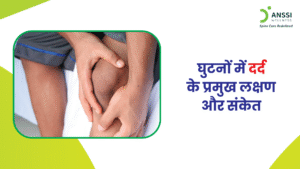A slipped disc, also known as a herniated or prolapsed disc, is a condition affecting the spine’s cushioning discs. These discs are located between the vertebrae, acting as shock absorbers and allowing flexibility. When the inner gel-like material of a disc pushes through its tough outer layer, it can compress nearby nerves, leading to pain and other symptoms.
Symptoms of a Slipped Disc
The symptoms of a slipped disc vary depending on its location and the severity of nerve compression.
Common symptoms include:
- Localised pain: Severe pain in the neck or lower back
- Radiating pain: Pain spreading to arms, legs, or buttocks
- Numbness or tingling: Affected nerves causing sensations in the corresponding limbs
- Muscle weakness: Nerve compression weakens muscles to make daily activities difficult
If left untreated, the condition can worsen, leading to chronic pain and limited mobility.
Common Causes
A slipped disc can occur due to numerous factors:
- Ageing: Discs naturally lose elasticity over time, making them more prone to herniation.
- Poor posture: Slouching or sitting for prolonged periods strains the spine.
- Heavy lifting: Lifting heavy objects incorrectly can exert excessive pressure on the spinal discs.
- Obesity: Excess body weight adds stress to the spine, accelerating wear and tear.
- Trauma: Accidents or sudden impacts can damage spinal discs.
Impact on Daily Life
A slipped disc significantly affects mobility and quality of life. Pain can limit movement, making tasks like walking, bending, or lifting challenging. Without proper treatment, it may lead to nerve damage or complications such as sciatica.
Prevention and Management
Preventing a slipped disc involves maintaining spinal health through lifestyle adjustments:
- Posture correction: Sit and stand with a straight spine.
- Regular exercise: Strengthen core and back muscles to support the spine.
- Safe lifting techniques: Bend at the knees, not the waist, when lifting heavy objects.
- Weight management: Maintain a healthy weight to reduce spinal stress.
Treatment Options
Treatment for a slipped disc varies based on the severity of the condition:
- Rest and medications: Over-the-counter pain relievers and anti-inflammatory drugs can alleviate mild symptoms.
- Physical therapy: Strengthening exercises and stretches help improve mobility and reduce pain.
- Surgery: When conservative measures are ineffective in severe situations, surgery is recommended.
Non-Surgical Spinal Decompression Treatment
For those seeking non-invasive options, spinal decompression treatment at ANSSI Wellness offers a proven solution. This US-protocol-based treatment gently stretches the spine, relieving pressure on the affected disc and compressed nerves. Unlike medications or surgery, spinal decompression addresses the root cause, providing long-term relief and restoring mobility.
If you’re struggling with back pain or a slipped disc, don’t let it control your life. Visit ANSSI Wellness to explore spinal decompression treatment and take the first step toward a pain-free future. Schedule your consultation today!
About ANSSI:
ANSSI Wellness focuses on improving the quality of life for patients suffering from spinal issues, aiming to provide relief where other conventional treatments have failed. Through advanced non-surgical spinal decompression treatment, ANSSI is committed to helping patients avoid surgery and recover in a safe, effective, and compassionate environment.



